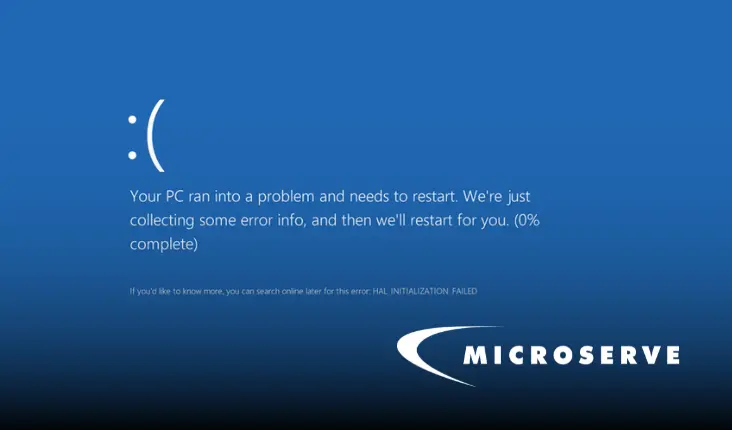This is the first of a six-part series on the Cloud and Cloud Services offered at Microserve. In Part 1 I’m going to cover some of the basics of what the Cloud is and what the Cloud means for your business. The Cloud is an essential part of today’s computing and technology world. Nearly everything we use today is powered in some way, shape, or form by cloud tools. From Cloud Storage to Cloud-based apps our world revolves around this nebulous (pun intended) concept.
I’ve written a lot about the Cloud on the Microserve blog, including my take on what the Cloud really is—and isn’t. In this first post I’m going to borrow from that post and expand on it, then outline the rest of the series that I’ll be posting over the next few weeks.
Recap, what is Cloud Services
From my older post here’s how I characterized the Cloud:
So the Cloud and Cloud computing means there is a computer (a server) connected to the Internet that is doing a job for you that you don’t need to see or interact with to get things done. Facebook runs on the Cloud. OneDrive is a cloud storage service. Outlook.com is cloud-based email.
While most of the time we think of the Cloud in terms of saving files to OneDrive or checking email through Outlook.com or something like that, almost everything you do online is in the Cloud. But the things you do day to day are only part of what the Cloud does for us. Consumers think of the Cloud as an easy way to do things, but for businesses the Cloud represents an easier, faster, and more secure way to manage servers and data than if they had to manage all the servers themselves.
When a business leverages the Cloud for some or all of its computing needs, it doesn’t need to buy more servers every time it needs more resources. Using the Cloud a business can increase (and decrease) the number of servers it needs as fast as you can send an email.
The Cloud comes down to using other people’s computers that are connected to the Internet to run programs or store files for your business. If you have a website and use a hosting company like Dreamhost, Media Temple, Rackspace, or WPEngine, you’re using the Cloud to run your website. Your host gives you space to store files and resources to run things like the web server and a database for a CMS. Cloud storage works the same way for files where your files (like for an offsite backup) are encrypted and stored on your provider’s servers. You can get to the files when you need them as long as you can connect to the Internet. Cloud-based disaster recovery works the same way but also includes syncing your files from your primary servers to the Cloud provider and having servers set up and ready to be turned on at a moment’s notice if your main servers crash or get overloaded.
The practical side of the Cloud—You probably use the Cloud all day, everyday
If you use Dropbox, Google Drive, or OneDrive then you’re already using the Cloud for storage, in this case, just to store and share files. While Google and Microsoft own their servers that store your files, until recently Dropbox used the Cloud to store your files on other people’s servers (Amazon’s specifically). Yes, a Cloud service using a Cloud service to run its Cloud business. Why did Dropbox use Amazon instead of buying their own servers and storage? Cost and expertise. Amazon (and Google and Microsoft) have the Cloud storage thing down pat. It was much more cost effective for Dropbox to host files using Amazon’s hardware than to buy and maintain (and continually expand) its own data center. For a while at least.
This is the number one reason the Cloud is a revolution in computing. You can have all the storage you need, as you need it, and someone else worries about running the servers. Dropbox eventually outgrew Amazon and just finished a three year project to set up their own data center and move files to their own servers. If you’d like to get a sense of how big a job it was for Dropbox to move petabytes of data off Amazon, (1 petabyte is 1 million gigabytes—this infographic sums up how big a petabyte is) this article from Wired gives insight into the scale of the challenge. In short, to move off the Cloud to their own servers, Dropbox had to design their own hardware, invent a new programming language, and juggle moving data from one place to another without any users noticing (I didn’t notice and I use Dropbox daily).
While Dropbox is an extreme example of moving off the Cloud to your own servers, it gives you a sense of the benefit. When someone else worries about the keeping servers running and adding more and more (and more) storage, you can focus on your business.
Storing files is just a small part of how we use the cloud today. From Gmail to Salesforce.com we use apps and services run over the Internet without thinking about it. It’s normal. It’s easy. And that’s exactly what the Cloud is for—easy access to applications and tools that would be too hard to run and manage yourself.
Where do we go from here
In the rest of the series I’ll cover the some of the practical uses of cloud computing like backing up your data, having servers at the ready if yours fail, deploying web apps, and hosting services and applications (like anti-spam solutions). Microserve created a Cloud services solution that provides backup, disaster recovery, on demand infrastructure, and several hosted services like anti-spam, Exchange, and Office 365. We leverage the Cloud ourselves and know that if you don’t have the time, expertise, or money to set up your own back office servers, having someone like Microserve do the heavy lifting for you is a huge plus.
Learn more about our cloud services offerings and get in touch if you’d like to learn more about our flexible solutions.
Continue reading this series with Part 2: Data and Backups.





